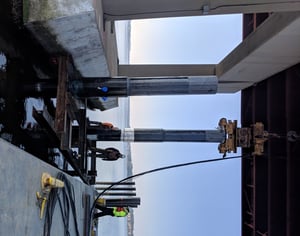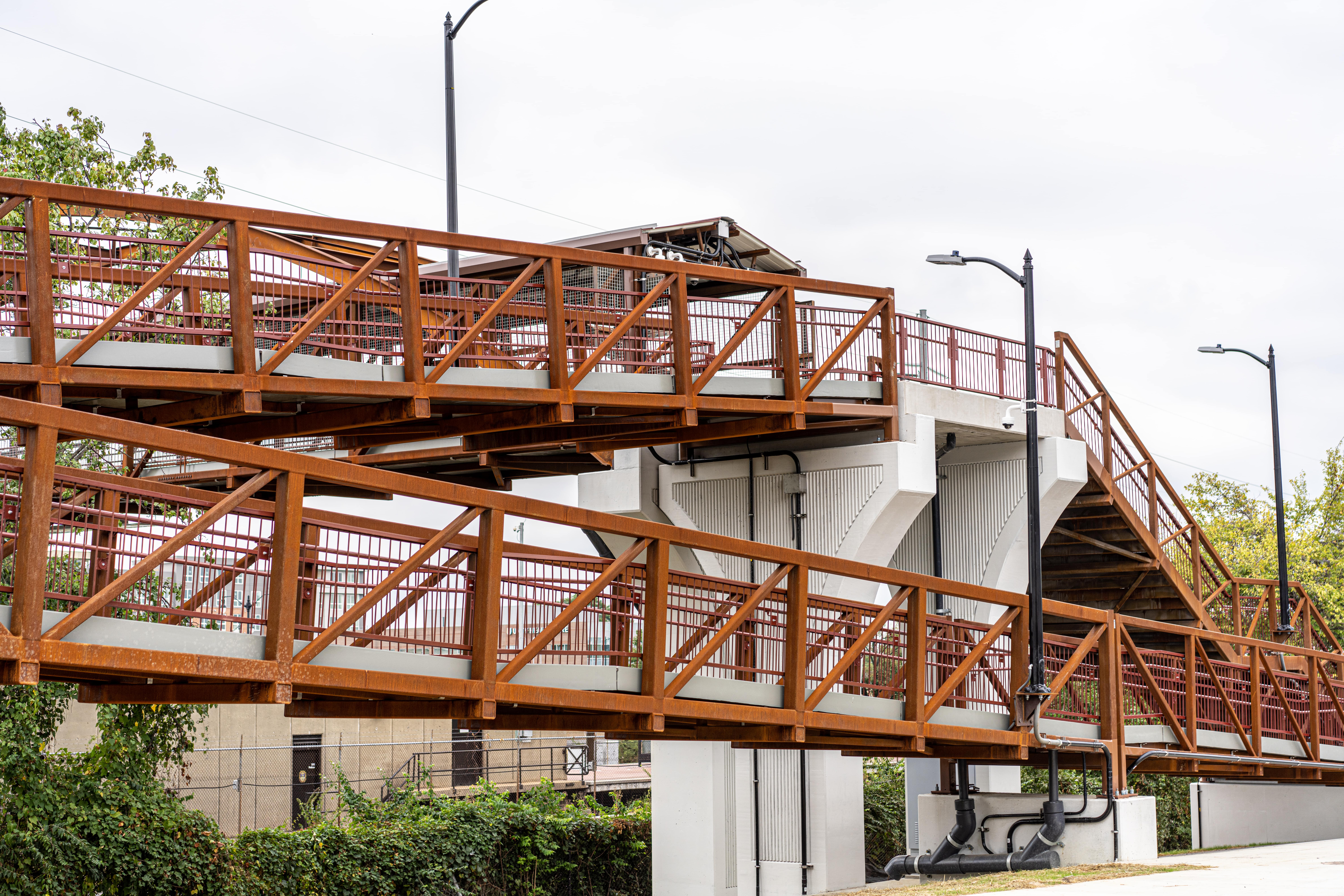 Composite Advantage designs custom FRP piles for each fender project. Pile design considers the soil profiles, required energy absorption, and limits of deflection to meet the requirements of the project. The resulting design, based on these variables, can require that a pile be over 80’ in length. This creates a construction problem when the pile needs to be installed under a bridge with a limited clearance.
Composite Advantage designs custom FRP piles for each fender project. Pile design considers the soil profiles, required energy absorption, and limits of deflection to meet the requirements of the project. The resulting design, based on these variables, can require that a pile be over 80’ in length. This creates a construction problem when the pile needs to be installed under a bridge with a limited clearance.
CA developed an innovative method for installing piles in any location no matter the clearance. The method allows for the pile to be cut into multiple sections and spliced together using FRP collars. The collars are installed in two steps, so they are designed to easily slide over the pile in order to simplify the process. The first step happens in the shop while the final splice connection is under the bridge.
Half of the collar length is bonded to the top pile section. Shop bonding is in a controlled environment which eliminates temperature concerns and takes advantage of vacuum pumps to quickly pull the epoxy bonding material into the gap between the collar and the pile. Shop bonding also allows for the piles to be bonded horizontally which removes the need for cranes and lifts that would be needed if the pile was vertical.
The splice connection the lower section in the field requires more effort to make sure that the collars are seated properly on the pile. Bonding the collar to the pile also requires attention to ensure that the material has filled the gap and cured fully before continuing to drive the combined pile. The lower section of the pile is driven into the ground and the bonding area is kept above the water line. The next piece of the pile with the shop-bonded FRP collar on the bottom of the section is slid over the driven pile. The use of shims between the collar and the pile outer diameter helps the spliced pile to be installed in a concentric manner. A seal is placed around the bottom of the collar to keep the epoxy from spilling out, and the epoxy is poured into holes pre-drilled in the collar.
One of the big obstacles for the bonding procedure is outdoor temperature. The epoxy manufacturer states that the lowest working temperature should be 50 °F, however some projects require a winter installation. To solve this problem, the collars were wrapped in heat blankets to warm the collar and pile to temperatures above 50 °F. The heat blanket is kept on the collar until the epoxy material has fully cured.
Composite Advantage has been able to successfully design and build spliced piles that meet project requirements and fit in low clearance areas. The innovative culture at CA allowed both engineers and floor personnel to work together to find a method that allows FRP piles to be installed in almost any location without being limited by overhead clearance of bridges or cold outside temperatures.

